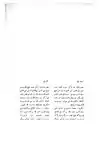Firuz-Shah Zarrin-Kolah (Persian: فیروزشاه زرین کلاه, lit. 'King Firuz of the Golden Crown') was a Kurdish dignitary,[1][2] and the seventh in the ancestral line of Shaykh Safi Ardabili, the eponym of the Safavid dynasty of Iran.
Genealogy
In the pre-Safavid written work Safvat as-safa (oldest known extant manuscripts from 1485 and 1491), the origin of the Safavids is traced to Firuz Shah Zarin Kolah who is called a Kurd (from Sanjār), while in the post-Safavid manuscripts, this portion "Kurd from Sanjar" has been excised and Piruz Shah Zarin Kollah is made a descendant of the Shi'ite Imams[3] The male lineage of the Safavid family given by the oldest manuscript of the Safwat al-Safa is:"[Sheykh] Safi al-Din Abul-Fatah Ishaaq the son of Al-Shaykh Amin al-Din Jebrail the son of al-Sâlah Qutb al-Din Abu Bakr the son of Salâh al-Din Rashid the son of Muhammad al-Hafiz al-Kalâm Allah, the son of ‘Avâd the son of Birûz (Pirûz) al-Kurdi al-Sanjāri.


Firuz Shah likely migrated from Kurdistan to the region of Ardabil in the 11th century.[1]
After the establishment of the Safavids, the genealogy in official texts trace the lineage of Piruz Shah Zarin Kolah to the 7th Shi'ite Imam, Musa al-Kadhim.[4] But the origins of the family of Shaykh Safi al-Din go back not to Hijaz but to Kurdistan, from where, seven generations before him, Firuz Shah Zarin-kulah had migrated to Azerbaijan.[5]
Notes
- 1 2 F. Daftary, "Intellectual Traditions in Islam", I.B.Tauris, 2001. pg 147: "But the origins of the family of Shaykh Safi al-Din go back not to Hijaz but to Kurdistan, from where, seven generations before him, Firuz Shah Zarin-kulah had migrated to Azerbaijan"
- ↑ Barry D. Wood, The Tarikh-i Jahanara in the Chester Beatty Library: an illustrated manuscript of the "Anonymous Histories of Shah Isma'il", Islamic Gallery Project, Asian Department Victoria & Albert Museum London, Routledge, Volume 37, Number 1 / March 2004, Pp: 89 - 107.
- ↑ R Savory, "Ebn Bazzaz" in Encyclopaedia Iranica). Online access at
- ↑ In the Silsilat-ol-nasab-i Safawiya (composed during the reign of Shah Suleiman)(1667–1694), written by Shah Hussab ibn Abdal Zahidi, the ancestry of the Safavid is traced back to the first Shi'i Imam as follows: Shaykh Safi al-din Abul Fatah Eshaq ibn (son of) Shaykh Amin al-Din Jabrail ibn Qutb al-din ibn Salih ibn Muhammad al-Hafez ibn Awad ibn Firuz Shah Zarin Kulah ibn Majd ibn Sharafshah ibn Muhammad ibn Hasan ibn Seyyed Muhammad ibn Ibrahim ibn Seyyed Ja'afar ibn Seyyed Muhammad ibn Seyyed Isma'il ibn Seyyed Muhammad ibn Seyyed Ahmad 'Arabi ibn Seyyed Qasim ibn Seyyed Abul Qasim Hamzah ibn Musa al-Kazim ibn Ja'far As-Sadiq ibn Muhammad al-Baqir ibn Imam Zayn ul-'Abedin ibn Hussein ibn Ali ibn Abi Taleb Alayha as-Salam. There are differences between this and the oldest manuscript of Safwat as-Safa. Seyyeds have been added from Piruz Shah Zarin Kulah up to the first Shi'i Imam and the nisba "Al-Kurdi" has been excised. The title/name "Abu Bakr" (also the name of the first Caliph and highly regarded by Sunnis) is deleted from Qutb ad-Din's name. ُSource: Husayn ibn Abdāl Zāhidī, 17th cent. Silsilat al-nasab-i Safavīyah, nasabnāmah-'i pādishāhān bā uzmat-i Safavī, ta'līf-i Shaykh Husayn pisar-i Shaykh Abdāl Pīrzādah Zāhidī dar 'ahd-i Shāh-i Sulaymnān-i Safavī. Berlīn, Chāpkhānah-'i Īrānshahr, 1924 (1303). 116 pages. Original Persian language source of the lineage: شیخ صفی الدین ابو الفتح اسحق ابن شیخ امین الدین جبرائیل بن قطب الدین ابن صالح ابن محمد الحافظ ابن عوض ابن فیروزشاه زرین کلاه ابن محمد ابن شرفشاه ابن محمد ابن حسن ابن سید محمد ابن ابراهیم ابن سید جعفر بن سید محمد ابن سید اسمعیل بن سید محمد بن سید احمد اعرابی بن سید قاسم بن سید ابو القاسم حمزه بن موسی الکاظم ابن جعفر الصادق ابن محمد الباقر ابن امام زین العابدین بن حسین ابن علی ابن ابی طالب علیه السلام
- ↑ Farhad, Daftary, ed. (2017-08-07), "Idrīs ʿImĀd al-Dīn and medieval Ismaili historiography", Ismaili History and Intellectual Traditions, Abingdon, Oxon: Routledge, pp. 92–99, ISBN 978-1-315-26809-5, retrieved 2021-06-12
External links
- Safavid history and Zarrin Kolah in Spanish
- Ebn Bazzaz by R. Savory in Encyclopædia Iranica